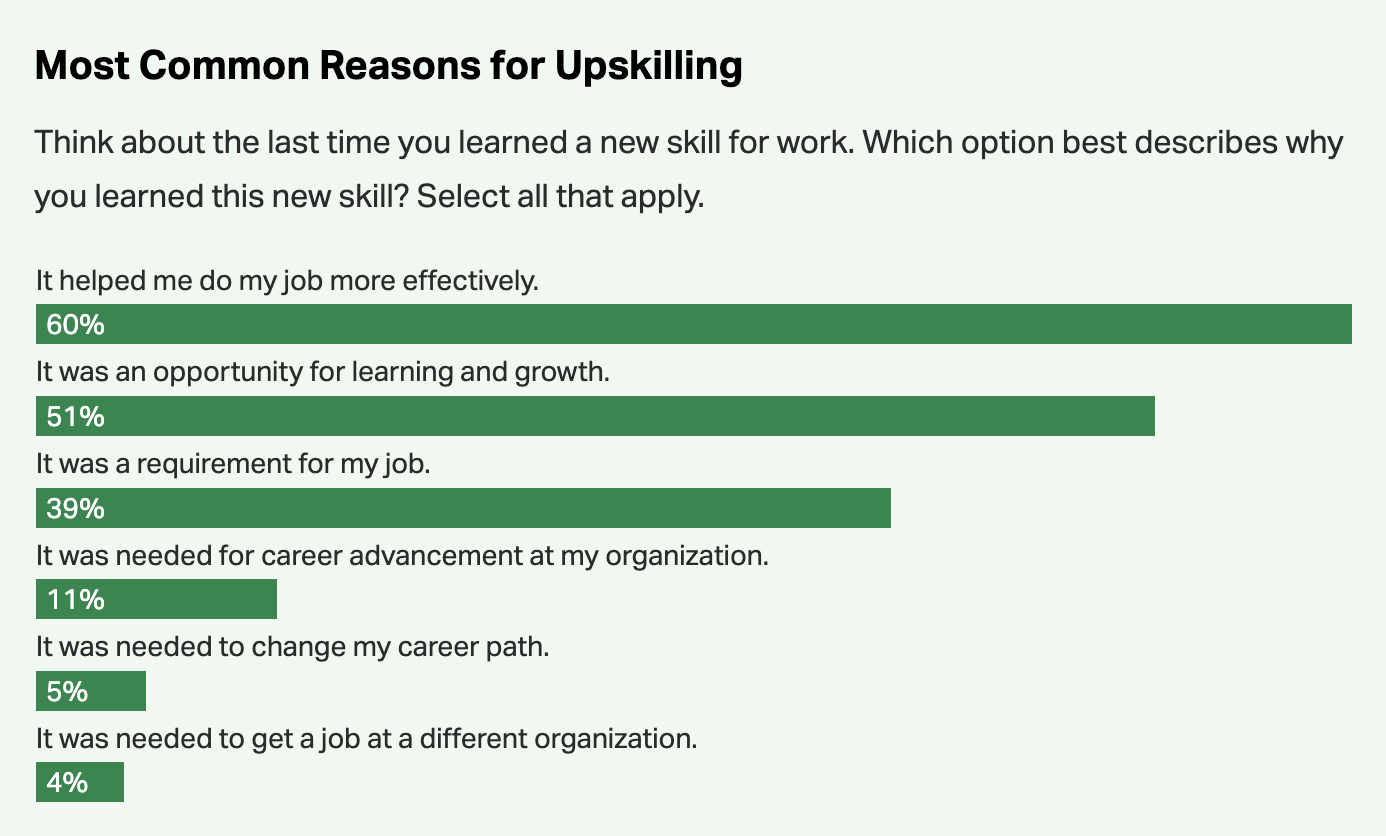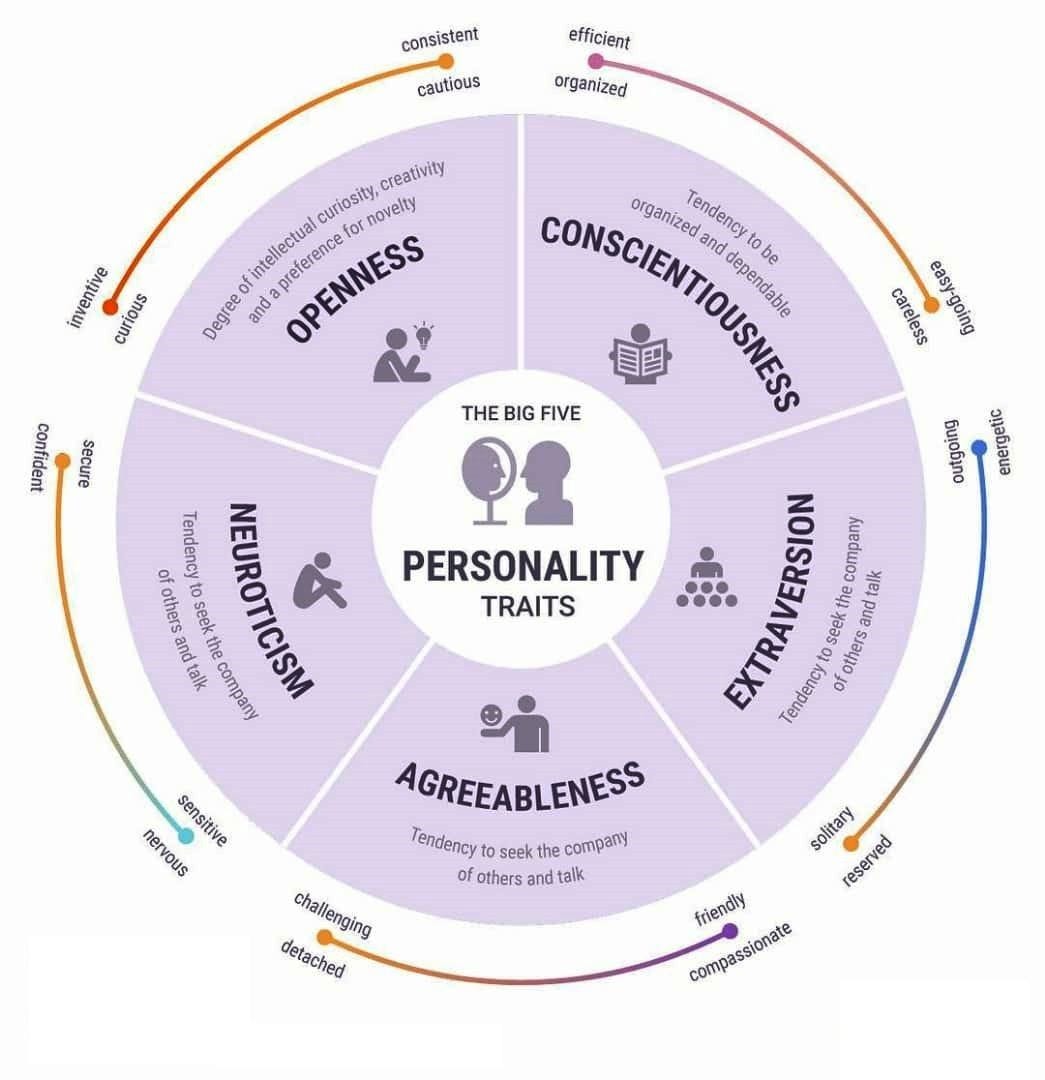15 Effective Employee Retention Strategies in 2024
In the wake of Covid-19, millions of employees from many sectors around the world have embarked on a “mass exodus” from the workplace. Many have tried to explain the “mass exodus,” but reports suggest it could be due to inadequate pay, limited career advancement, poor work-life balance, dissatisfaction with management or the company, and many other reasons.
This so-called “Great Resignation,” spurred by the COVID-19 pandemic, has turned work into a labor market. TikTok users have coined phrases like “quiet quitting” and “act your wage” as employees find communities of people who don’t feel their workplace values or appreciates them enough.
As employees decide what works for them, employers are having to rethink what really makes their company a great place to work. If you feel like your business may be at risk of losing top talent, or you’ve started losing your best employees due to “The Big Resignation,” it may be time to consider some employee retention strategies. Here are 15 effective strategies to increase employee job satisfaction and help you retain your best employees.
1. Offer a Competitive Base Salary or Hourly Rate
Offering a salary that is worthy of sacrifice and hard work should be a top priority when it comes to making your employees feel appreciated. Fair compensation is increasingly more important than any other item on this list; you won’t effectively retain employees unless you pay them well for their time.
Not only should employees be paid fairly for their time and work, but they should also be able to afford the cost of living where they live, their wages should be adjusted regularly as inflation increases, and they should be compensated based on their level of experience with the job. In addition, as their responsibilities increase, so should their compensation.
The first step to setting the right wage for your employees is to determine the living wage in your area. Keep in mind that while the federal minimum wage is currently $7.25, reports show that hourly wage is below the living wage in most counties in the United States. MIT offers a living wage calculator to help estimate the cost of living in each county. state, city, or metropolitan area. This should be the absolute base salary for any position, and wages will increase from there.
The second step is to research what your competitors are offering in terms of salaries and wages, as well as what types of raises they are offering. If you don’t offer the highest salaries compared to your competitors, you’re more likely to lose your best employees. Lower performers will take their jobs, costing you significantly more in the long run than simply paying your best employees more.
Hiring and training a new employee is significantly more expensive than raising an existing employee. The Society for Human Resource Management estimates that it can cost between six and nine months of an employee’s salary to replace them after considering headhunting, recruiting, and training costs. For example, it costs $30,000 to $45,000 to replace an employee who makes $60,000 a year—not to mention the huge loss of productivity, revenue, and workflow during the hiring and training process.
2. Let Your Employees Work From Home
According to Upwork’s “Future of the Workforce Report,” 36.2 million Americans will work remotely by 2025—a nearly 90% increase since before the COVID-19 pandemic. Not only is remote work convenient for reducing the spread of disease, it’s also proven to make employees happier and more productive. With modern technology, you can work entirely (or even partially) from home in many industries.
While more research needs to be done on the long-term effects of remote work, Upwork’s report found that the positive effects of working from home include fewer unnecessary meetings, increased scheduling flexibility, the elimination of commuting, fewer distractions, and more autonomy. When your employees don’t have to spend time sitting in traffic, stressing about childcare, or losing productivity due to scheduling issues or long meetings, they’ll be more productive and happier.
Remote work may not be a long-term solution for many businesses, and more Americans are returning to the office every month, but offering flexible work-from-home options can be an incentive to keep your best employees at your company long-term.
3. Offer Flexible Schedules and Reduced Workdays
Along with offering remote work, research from the Society for Human Resource Management also shows that businesses that offer more flexible work options have significantly better employee retention. Even before the pandemic made working from home the norm, a 2019 study found that nearly two-thirds of workers found themselves more productive outside of a traditional office due to fewer interruptions, fewer distractions, and less commuting. Creativity doesn’t always turn on like a faucet, so offering your employees flexible work hours will encourage them to figure out when they’ll be most productive and efficient, allowing them to focus their attention on their work.
Along with offering flexible schedules, reducing the hours of your workday or workweek can actually increase employee productivity and encourage greater employee retention. A 2014 study from Stanford University found that productivity drops sharply after a worker clocks in more than 50 hours per week. While we often think of workaholics who arrive first and leave last as more dedicated and productive, that’s not necessarily true if much of those hours’ productivity are lost to exhaustion or burnout.
4. Encourage and Promote Work-Life Balance
Fourth on our list of key employee retention strategies for businesses is to encourage and promote a good work-life balance—not just for your employees, but for you, too. Especially after the pandemic dramatically changed how employees value work, more and more workers are citing work-life balance as a reason they’re considering new jobs or turning down opportunities. Work-life balance can come in the form of remote work, flexible scheduling, or reduced workdays, as mentioned above, or simpler actions like encouraging employees not to check email or answer work-related questions on the phone unless they’re at work or working. Respecting employees’ time off is key to maintaining healthy working relationships with them.
5. Recognize and Reward Your Employees for Their Work
Employees who feel recognized and rewarded appropriately by their workplace are much easier to retain long-term, but studies also show that those employees work harder and are more productive. Unfortunately, over 80% of American employees say they don’t feel recognized or rewarded. A report by the Brandon Hall Group found that companies that prioritize recognizing their employees multiple times per month are 41% more likely to retain employees and 34% more likely to see an increase in employee engagement.
There are many ways to recognize and reward your employees, but it’s important to make sure you prioritize both social recognition and monetary rewards. It feels great to not only be recognized for your work, but to be recognized publicly, because it lets people know when others are being appreciated, too. Financial rewards, whether in the form of cash, gift cards, or even other perks like paid time off, are some of the most important and successful rewards you can give your employees. Consider asking employees open-ended questions about what they want in terms of rewards.
Make sure you recognize not only the results but also the efforts of your employees. Sometimes projects don’t turn out as we hoped, numbers don’t come in, or deals don’t close. While this can be disappointing, make sure your employees know that even though they didn’t meet their goals, their work is still appreciated. This can help motivate your employees to try harder next time and support them when they feel discouraged or defeated.
6. Create a culture that employees want to be a part of
Another important retention strategy is to create a work culture that your employees want to be a part of. A 2019 Glassdoor study found that company culture matters not only to employees considering a job (77% said they would consider a company’s culture), but also to employees who stay. In fact, nearly two-thirds of employees cite a good company culture as one of the main reasons they decide not to leave.
Developing a great company culture can involve implementing many of the employee retention strategies detailed in this list. These efforts can include rewarding your employees not just for success but also for effort, creating a meaningful mission for your company, and engaging your employees in creative decision-making about the organization’s current and future mission.
It’s also important to ensure your workplace is diverse and inclusive, especially for members of the BIPOC (Black, Indigenous, and People of Color) and LGBTQ communities, who often struggle to find workplaces where they feel safe and welcome. A workplace that respects people of all races, backgrounds, genders, and sexual orientations will attract and retain a broader, more diverse, and better talent pool.
7. Build Employee Engagement
One of the most important strategies for employee retention is building employee engagement with your organization. A disengaged employee can have low morale, which can lead to lost productivity and generally bring your company down. Make sure your employees have a voice by making them feel heard and showing them that their opinions matter.
Try creating opportunities for your employees to feel safe giving candid feedback. Chances are, your employees may know more about the best ways to complete a certain task than you do if they have been doing it longer, so giving them the opportunity to communicate and collaborate to improve processes and the work environment will help employees feel more comfortable with the culture and ensure they stay engaged.
Likewise, don’t force unnecessary participation or push activities designed to build engagement without a specific goal or solution in mind. For employees who don’t want to participate in any non-work-related activities you pay them to do, forcing them to participate in social activities or other non-work-related activities can be a reason to quit. Every workplace is different, and not all workplaces require the same level of employee engagement—one of the best ways to avoid this problem is to ask employees what they prefer.
8. Create an Emphasis on Teamwork
Another important part of retaining employees in some environments is emphasizing teamwork. Creating opportunities for collaboration—including collaboration across departments—can foster not only teamwork but also overall employee engagement. Strong teamwork not only encourages cohesion among coworkers, which can create a better overall culture, but also drives higher overall performance. Good teamwork helps managers and employees combine strengths and weaknesses across departments and balance workloads more strategically.
9. Reduce employee burnout
A 2020 Gallup report, Employee Burnout: Causes and Cure, found that 76% of employees experience burnout at work sometimes, and 28% said they feel burned out “often” or “always.” While burnout is often thought to be caused by overwork and can be solved by taking a few days off or reducing their hours, Gallup research shows that burnout is actually more influenced by how employees experience their workload than the number of hours they work. Employees who feel more engaged in their work, who are properly recognized and rewarded, and who are offered more flexible work through reduced hours, telecommuting, or flexible scheduling actually report higher levels of happiness.
Gallup reports that the top five factors that lead to employee burnout are:
- Unfair treatment in the workplace
- Unmanageable workload
- Clear communication from management
- Lack of manager support
- Unreasonable time pressure
Developing and improving your overall company culture, building better employee engagement, and providing clear communication, consistent management, and transparency will all help reduce employee burnout. Additionally, offering health care and other perks can go a long way toward employee retention.
10. Provide healthcare services
The COVID-19 pandemic has reminded us that both physical and mental health are paramount to a happy and functional society. Caring for your employees’ health doesn’t just mean offering things like flexible scheduling or remote working. You should also ensure that your workplace is clean and hygienic with health and safety protocols in place, and that you have strict rules for employees coming to work when sick. This also means offering sick pay to encourage employees who are required to be on-site to stay home when sick. Make sure to also offer quality health insurance with great coverage and multiple levels and options so your employees know their health is important.
Some companies, including LinkedIn, have also found success in providing all employees with mental health time off to help combat burnout. This collective week off has been credited with helping exhausted workers not feel like they’re missing out on important emails, meetings, and project notes.
11. Offer Other Job Perks
While many of the retention strategies on our list so far could be considered job-specific perks, job perks can come in many shapes and forms. In addition to offering the basics, like telecommuting, flexible schedules, and great health care, you can offer your employees discounts on things like cell phone service, transportation, car rentals, food, and more. AnyPerk.com, CorporatePerks.com, and BenefitHub.com are all similar services that, at an affordable price of just $5 per employee per month, give your employees great benefits and discounts at national businesses. You can also build your own connections with local businesses that may be happy to offer discounts on products.
12. Drive Growth and Provide Personal and Professional Development
A large company recognizes the importance of training during employee induction, but a company with strong employee retention also recognizes the value of continuing to invest in employee training and upskilling. Upskilling your employees by investing time and resources and providing them with access to additional education and training in their field not only makes them happier and more likely to stay with your company, but it also makes your company stronger overall.
13. Hire for Cultural Fit
Many people can learn a specific skill or develop a certain expertise. But not everyone fits into an existing team nor shares the cultural values of your employees and your company. Hiring for culture fit can ensure long-term employee retention because these new hires will integrate into the team faster, make everyone more comfortable, and get productivity back on track faster. In fact, a Harvard Business Review article cited bad hiring decisions as one of the top reasons employees lose their jobs, with 41% of employers surveyed estimating that a bad hire costs their business $25,000 or more.
14. Managing Retention
A 2018 Udemy Employee Experience Report found that nearly 50% of employees leave their jobs because of a bad manager. A good manager, on the other hand, acts not as a “boss” but as a “coach.” The key difference is that while the boss is seen as a source of insatiable demand, micromanaging every aspect of their employees’ work, the coach knows that their employees are team players. A good boss/coach will guide their employees in the right direction by providing advice, support, and goals while still allowing their employees a high level of autonomy.
15. Know When to Say Goodbye
Unfortunately, no strategy can guarantee perfect employee retention. At some point, your employees will have to move on — either retiring or finding a job that better fits what they’re looking for. Knowing when to say goodbye and handling layoffs effectively and efficiently is as important to overall employee retention as any other strategy. Remaining employees should know that they’ll be well taken care of whenever they move on.
Why Employees Leave and Why They Stay
Encouraging employees to stay is important, but knowing why employees leave can be even more important to developing an effective retention strategy. Offboarding, the process of ending the employment of a departing employee, can be just as important as onboarding. Offboarding can help encourage an amicable separation, ensure knowledge transfer, and protect company assets and data, as well as help the company learn why the employee is leaving and what the company can do in the future to retain the employee.
An important part of the exit process is the exit interview, which can help employers better understand why the employee is leaving. Some of the most common reasons — especially in the wake of COVID-19 — include:
- Inadequate salary or hourly rate
- Feeling overworked or burned out and unsupported
- No or limited opportunities for career growth and advancement
- Needing a better work-life balance
- Dissatisfaction with management or company culture
- More attractive job opportunities
Herzberg’s Two-Factor Theory
American psychologist Frederick Herzberg, perhaps best known for his work in business management, famously popularized his “Motivation-Hygiene” theory, sometimes referred to as his “Two-Factor” theory. According to the theory, there are two sets of factors that influence motivation in the workplace and either enhance employee satisfaction (and thus encourage employee retention) or hinder it.
Hygiene Factors
- Compensation
- Job Security
- Leadership
- Peer Relationships
- Status
- Working Conditions
Motivators
- Responsibility
- Job Satisfaction
- Achievement
- Growth Opportunities
- Promotion
- Recognition
Hygiene factors refer to the factors that actually motivate in the workplace. Herzberg’s Hygiene factors are those that satisfy the physiological needs that every employee expects to be met. These factors focus on things like money, job security, good working relationships, and positive working conditions. Without these basic Hygiene factors, employees cannot be satisfied and no Motivators will keep employees at the company.
Motivators, on the other hand, depend on the conditions of the job. These are the factors that Motivate employees to work better and strengthen their commitment to the company and their job. These factors focus on things like opportunities for growth, career development or advancement, recognition, increased responsibility, and more.
How to Create Your Own Employee Retention Strategy
While all of the 15 employee retention strategies we have outlined above are effective in their own way, every business’s needs are different and some strategies make more or less sense than others.
Competitive pay, health care services, perks, and career development can all directly benefit employees. While your business may not be able to offer everything employees are looking for in each of these areas, if you choose a few of these strategies to focus on, you can still start working toward improving employee retention.
Offering the opportunity to work from home, flexible scheduling, promoting work-life balance, and reducing employee burnout are all important strategies to help retain employees. Since certain types of businesses do not allow for flexible scheduling or remote work due to the nature of the business, it may make sense to focus on promoting a healthy work-life balance and providing strategies to reduce burnout.
Creating a strong culture through recognition, rewards, engagement, teamwork, and good management and hiring practices are all strategies for creating the best environment for your employees. All of these are important regardless of your type of business, but you should focus on certain areas more or less depending on your industry. No matter how hard you try to show your employees you care, the culture you create in your workplace is paramount to retaining good employees.
The Bottom Line
Employee retention is critical to the success of a business. The strategies we’ve outlined above aren’t an automatic fix, but rather part of a larger shift toward employee support and care that many companies aren’t doing enough of. The pandemic has made many workers realize the value of their time and energy, so making sure your company is demonstrating that you value your workers’ time and energy appropriately is incredibly important.







